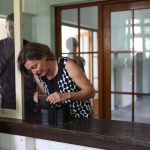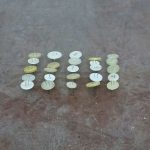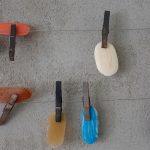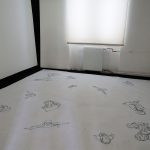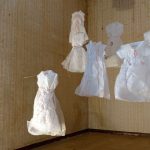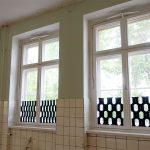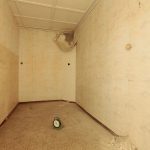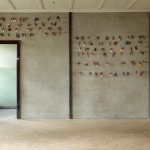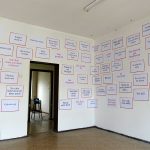english abstract → Summer workshop and exhibition In 2018, therefore, the Endmoräne e.V. in Eisenhüttenstadt (formerly Stalinstadt) and thus in a planned city, which emerged after a decision in July 1950 as a socialist residential town for the Iron and steel combine East. Dorothée Bauerle Willert, excerpt from the Katalogue less
PLAN 2 \ 5
in the grid for a better future \?
Former Children’s Week Home Eisenhüttenstadt
in cooperation with the Documentation Center Everyday Culture of the GDR in Eisenhüttenstadt
Plan cities are an idea – they follow a draft, a grid set in advance. The raster – the rake that smoothes things – is at the same time, in East and West, one of the strongest expressions of modernity: on many levels, grids determine the structures of architecture, of art, of the organization of social structures. Rasters are structures of order that express the desire for restraining capricious growths.Of course, like architecture, pedagogy does not come without a plan, goals or grid. And the utopia of a new society, as it should be promoted in ideal cities, reaches far into education, even in the former GDR, where the guiding idea of the socialist „new man“, the education system essentially shaped.
Sommerwerkstatt und Ausstellung
PLAN 2\5
im Raster für eine bessere Zukunft \?
Ehemaliges Kinderwochenheim Eisenhüttenstadt
in Kooperation mit dem Dokumentationszentrum Alltagskultur der DDR in Eisenhüttenstadt
2018 nun also landen die Endmoränen in Eisenhüttenstadt (ehemals Stalinstadt) und damit in einer Planstadt, die nach einem Beschluss im Juli 1950 als sozialistische Wohnstadt für das Eisenhüttenkombinat Ost entstanden ist.
weiterlesen →
Wie die Architektur kommt natürlich auch die Pädagogik nicht ohne Plan, ohne Zielvorgaben oder Raster aus. Und gerade die Utopie einer neuen Gesellschaft, wie sie in Idealstädten befördert werden soll, reicht weit in die Erziehung hinein, auch in der damaligen DDR, wo die Leitidee vom sozialistischen »Neuen Menschen«, das Erziehungswesen wesentlich prägte. (Auszug des Textes von Dr. Dorothée Bauerle-Willert aus der Dokumentation 2018) weniger anzeigen
Mit Arbeiten von | Susanne Ahner, Kerstin Baudis, Ka Bomhardt, Claudia Busching, Monika Funke Stern, Gisela Genthner, Margita Haberland, Renate Hampke, Ingrid Kerma, Gunhild Kreuzer, Angela Lubič, Barbara Müller, Dorothea Neumann, Patricia Pisani und Antje Scholz
Gastkünstlerinnen | Frauke Danzer (DE), Katrin Glanz (DE), Susanne Pittroff (DE)
Dauer der Ausstellung | 16.6. – 1.7.2018
Pressemitteilung 2018 →
Pressespiegel 2018 →
Dokumentation 2018 →
Sommerwerkstatt und Ausstellung wurden gefördert von |
Mittel des Landes Brandenburg
Landkreis Oder-Spree
Stadt Eisenhüttenstadt
Medienpartner | taz, RadioEins rbb
Dank für die freundliche Hilfe |
Axel Drieschner und die Mitarbeiterinnen des Dokumentationszentrums Alltagskultur der DDR


